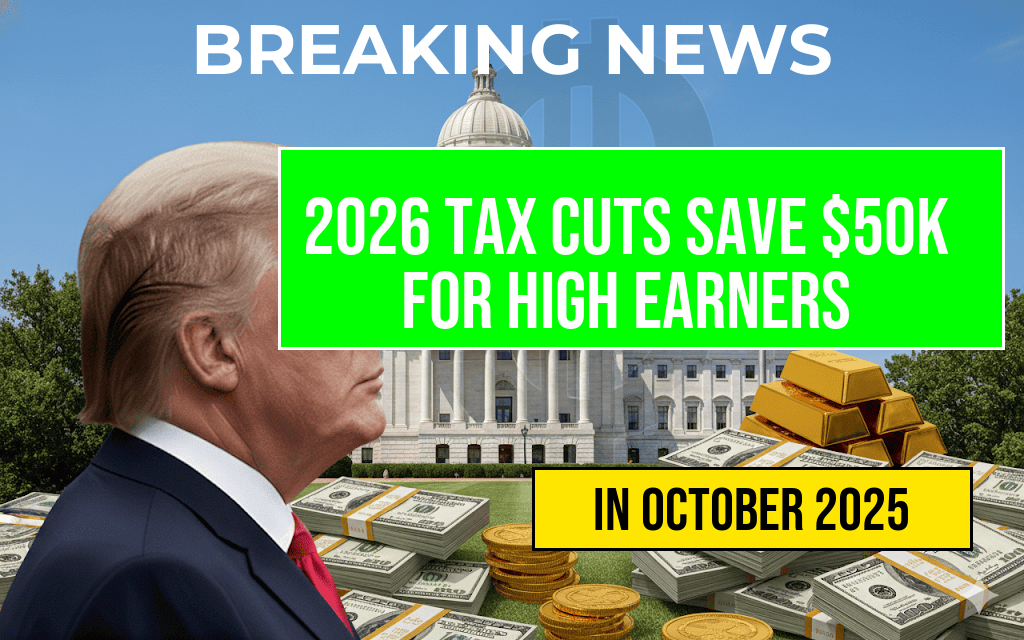Projected 2026 Tax Brackets Could Save a $50,000 Earner Hundreds as Top Rate Drops to 12%
Taxpayers earning around $50,000 may see significant savings under the proposed 2026 tax brackets, especially as the top marginal rate is set to decline to 12%. This shift could translate into hundreds of dollars in additional take-home pay for middle-income earners, contrasting sharply with current levels where higher earners face a top rate of 22% or more. The changes are part of broader efforts to recalibrate the federal income tax system, aiming to provide relief for middle-class households while adjusting brackets to inflation. As these proposals evolve, financial analysts and taxpayers alike are closely scrutinizing how the adjustments could impact their annual tax bills, with some estimating savings of up to several hundred dollars for those in the $50,000 income range.
Understanding the 2026 Tax Bracket Changes
Lower Top Marginal Tax Rate
One of the most significant proposed adjustments is the reduction of the top marginal tax rate from 22% to 12%. This change applies primarily to high-income earners but also influences the structure of the entire tax table, making the overall system more progressive for middle-income households. The reduction aims to simplify the tax code and provide substantial relief, especially as inflation pushes income brackets upward.
Adjusted Income Thresholds and Bracket Structure
The Internal Revenue Service (IRS) is expected to adjust income thresholds annually to account for inflation, similar to previous years. For 2026, the brackets are projected to be calibrated so that individuals earning around $50,000 will fall into a lower tax bracket, potentially paying less than they would under current law.
| Tax Rate | Income Range |
|---|---|
| 10% | Up to $14,000 |
| 12% | $14,001 – $50,000 |
| 22% | $50,001 – $100,000 |
| 24% | $100,001 – $200,000 |
| 32% | $200,001 – $500,000 |
| 35% | $500,001 – $1,000,000 |
| 37% | Over $1,000,000 |
These brackets reflect a simplified projection based on legislative proposals and inflation adjustments. Actual thresholds may vary as final legislation is enacted and revised.
Impact on Middle-Income Taxpayers
Potential Savings for a $50,000 Earner
For a taxpayer earning approximately $50,000 annually, the shift could mean a notable reduction in taxes owed. Currently, such an individual might pay a marginal rate of 22% on income exceeding the current threshold, but with the new brackets, their entire income could fall within the 12% or 10% brackets. This adjustment would lower their overall tax liability, potentially saving hundreds of dollars each year.
- Estimated savings: Up to $300 annually for a $50,000 earner, depending on deductions and filing status.
- Effective tax rate: Reduction from around 15-18% to approximately 12% or less.
- Tax planning considerations: Adjustments in brackets could influence decisions on retirement contributions and itemized deductions.
Broader Tax Policy Goals
The proposed changes aim not only to provide immediate tax relief but also to streamline the tax code, reduce complexity, and align tax brackets with inflation. Policymakers argue that these adjustments could bolster disposable income for middle-class families, supporting consumer spending and economic growth. However, critics often express concern about the long-term fiscal impact and the potential for increased deficits if revenue projections do not materialize as anticipated.
Expert Perspectives and Future Outlook
Financial Analysts React
Tax experts suggest that the 2026 reforms could mark a turning point in federal tax policy, emphasizing the importance of understanding bracket changes and their implications. According to Forbes, strategic planning around income timing and deductions could become increasingly vital for taxpayers seeking to maximize savings.
Legislative Timeline and Implementation
While the proposals are promising, they are subject to legislative approval, with debates likely to continue into the 2024 and 2025 congressional sessions. Once passed, the IRS will update its forms and instructions, and taxpayers will need to adjust their planning accordingly. Staying informed through official sources such as the IRS remains essential for accurate filing.
Summary
The anticipated 2026 tax brackets, featuring a top rate reduction to 12%, could provide meaningful savings for middle-income earners, especially those earning around $50,000. As inflation-adjusted brackets shift downward and the top rate drops, taxpayers may find their annual tax bills reduced by hundreds of dollars. While the legislative process continues, individuals should monitor developments and consider how these changes might influence their financial planning strategies in the coming years.
Frequently Asked Questions
What are the projected changes to the 2026 tax brackets?
The 2026 tax brackets are expected to see significant adjustments, with the top rate dropping to 12%, which could result in substantial savings for higher earners.
How will the new tax rates impact a $50,000 earner?
A $50,000 income earner could see hundreds of dollars in savings due to the reduction in the top tax rate and the potential shifting of income brackets.
When will these projected tax changes take effect?
The tax rate adjustments are projected to be implemented in the 2026 tax year, pending legislative approval and final government decisions.
Will these changes affect all income levels equally?
No, the tax savings are expected to be more pronounced for higher-income earners, particularly those near the top tax bracket.
How can I prepare for the upcoming tax changes?
It’s advisable to review your tax planning strategies, consult with a financial advisor, and stay informed about legislative developments related to tax reform for 2026.

Leave a Reply